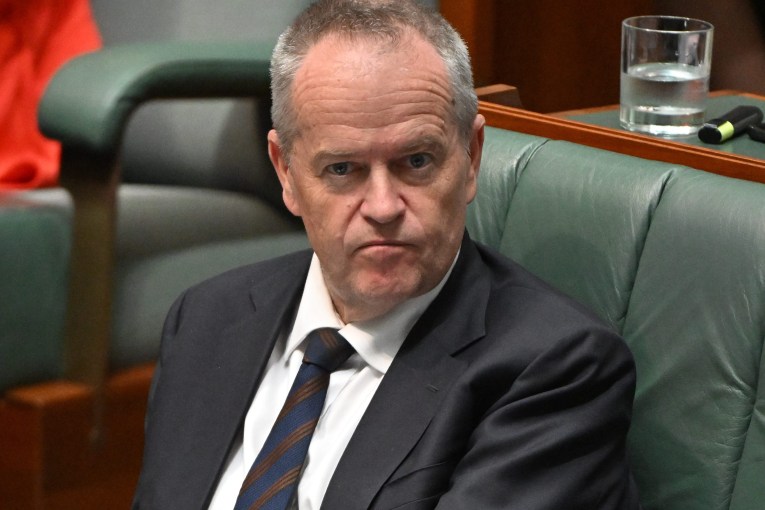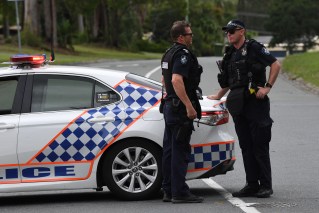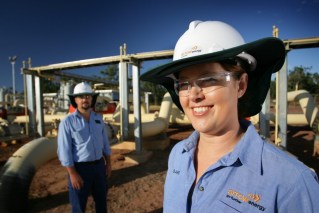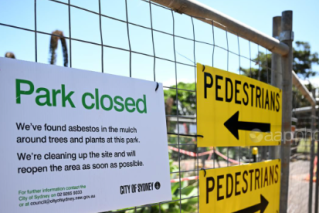Easter miracle: Rain resurrects Paradise Dam outlook
Bundaberg’s troubled Paradise Dam was headed for a dry July until rain arrived last week, topping up depleted levels that may well last until the end of the year, but not all the waters are becalmed.

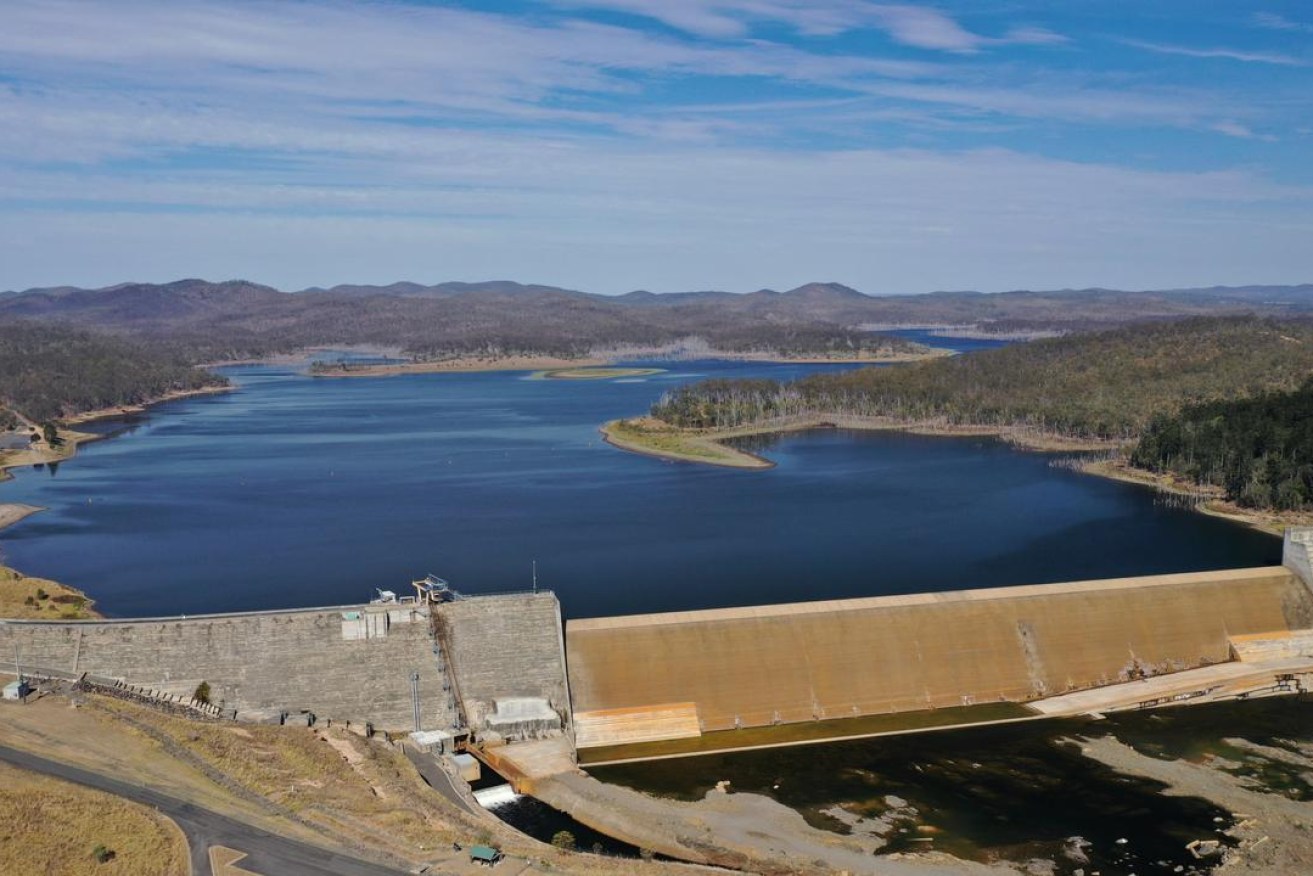
Paradise Dam, near Bundaberg.
Paradise Dam will be headed for a wet Christmas rather than a dry July, according to its operator SunWater, turning around dire predictions that the controversial system would no longer have water for irrigators by the middle of this year.
Data on SunWater’s website shows the dam at 44.1 per cent of its capacity, with water from recent rain still running into the catchment from surrounding swollen waterways and general run-off.
A spokesman for the State Government authority said about 25,000 megalitres had poured into the dam over the last fortnight, saving it from almost “dead storage” classification by June, the point at which water can no longer be released to farmers to irrigate crops.
The spokesman said that even without more rain falling, SunWater modelling indicated the dam could still provide water for irrigation until December this year.
He said additional in-flows into other water storages on the Bundaberg system, such as Fred Haigh Dam on the Kolan River and Ned Churchwood Weir, had also bolstered available volumes to draw on.
Plans earlier this year to shift 50,000 megalitres from Fred Haigh Dam to Paradise Dam as an emergency measure when fears were growing about a disappointing summer wet season, had also been shelved, the spokesman said.
SunWater’s modelling is also banking on farmers tapping into their on-farm dams to help alleviate any further strain on the system.
The revised outlook is a massive turnaround from the predictions aired earlier this month by Bundaberg Regional Council CEO Steve Johnston, who repeated at a function in Brisbane SunWater’s bleak estimates of the dam’s levels dwindling to 8 per cent by June.
“That’s going to pose a real problem for Bundaberg landholders for whom the price of agricultural land has gone up significantly, on average 50 per cent at the last valuation,” he told guests at the Queensland Futures Institute breakfast.
“With no guarantee of water supply for crops and especially tree crops in the near future, that’s a very big issue that our council will need to respond to.”
Restoration of water volumes also come as works to shore up the dam’s structure, weakened by a 1-in-200-year storm in 2013, are completed.
Central to the repair works was the lowering of the dam wall by 5.8 metres, as detailed in this report by InQueensland last year.
Local lawyer Tom Marland, who is leading a well-publicised class action against SunWater on behalf of local landholders for reducing the dam’s capacity, said farmers were still living in a climate of water insecurity, despite the latest influx of water from recent rain events.
“Putting it plainly, there’s 100,000 fewer megalitres of storage available in the dam than there was before,” he said.
“The first year the wall was lowered they dropped it to 72 per cent and this year we could be looking as low as 5 per cent worst case, with a best-case scenario of 30 per cent.”
The SunWater spokesman told InQueensland there was “wild speculation” about upcoming allocation percentages from Paradise Dam, which are yet to be issued and take effect from July 1, the start of the scheme’s new water year.
According to Marland, consistent water allocations up until last year had allowed growers to expand their production areas, finance new operations and transition out of lower-value bulk commodity crops into higher-value tree crops such as avocados and macadamias, which have blossomed across the region.
Unlike producers of vegetable crops and sugarcane, growers of tree crops don’t have as much latitude to fallow their paddocks if the irrigation taps are turned off. Once dead because of lack of water, tree crops are expensive to replace and take years to yield fruit and therefore income.
With allocations expected to be volatile in order to preserve what water remains in the dam, says Marland, irrigators may find the environment too tough to survive.
“There will be significant water trading going on (where irrigators can buy and sell their allocations on an open water trading market), which may get some through this crisis, but for a lot of growers there is going to have to be hard decisions made,” he said.
The Queensland Opposition is also continuing to press the State Government on details to calm the anxiety of farmers, with LNP Burnett MP Stephen Bennett asking Water Minister Glenn Butcher in Parliament if Paradise Dam would be restored to its full capacity as a “matter of urgency”.
“Even if the dam was restored to full capacity tomorrow, this would not automatically result in more water into the dam. Only rain has that effect,” Butcher said.
Butcher said Sunwater was reviewing announced allocations for the current water year based on recent rain and that it was too early to speculate on the announced allocations for the 2021/22 water year.
He said any plans to restore the dam to its full height would need to be subjected to due diligence.
“Sunwater and the Department of Regional Development, Manufacturing and Water are continuing the develop a detailed business case to identify the best way forward for fixing Paradise Dam and I anticipate the Queensland Government will be able to make a decision on the best long-term option later this year,” he said.
“We will not rush and cut corners. The safety of those surrounding the dam and the longer-term water needs of the Bundaberg and Burnett region, depend on getting this important work right.”
